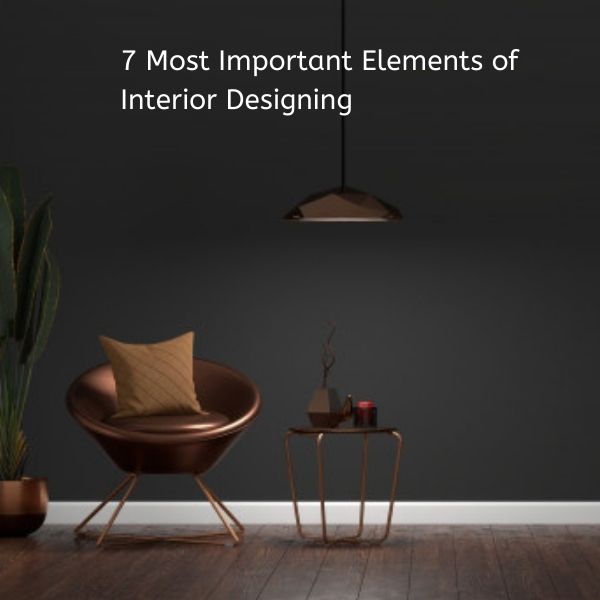7 Most Important Elements of Interior Designing
In the article given below we’ll be discussing a very important topic that’s “7 Most Important Elements of Interior Designing” let’s discuss it in detail:
It’s a undeniable fact that no matter where life takes you, you usually come back to your home, which is why there’s a saying ‘Home is where the heart lies.‘ Your home should be designed in such a way which reflects your personality and will further give you a sense of safety and comfort.
To create the latest interior design, the designer should plan keeping in mind the elements like line, space, light, color, etc. Have a real good look at some of the most significant aspects of interior designing.
Space:
Space is one of the most essential elements of interior design, which is actually defined by structural elements such as walls, ceiling, floor, and columns. A good designer is one who needs to balance the negative space and positive space. An empty space is referred to as negative space, while space, where objects are inserted, is known as the positive space.
Lines:
in a living space, lines play a significant role in establishing a sense of contrast, utility, and harmony. Furthermore, it is a mark that defines shapes as well as creates forms. Lines are broadly classified into 3 types:
Horizontal lines
Vertical lines
Dynamic lines.
In addition, if you talk about horizontal lines, these are found on beds, tables, etc., vertical lines are mainly found on windows, doorways, etc., and dynamic lines are actually observed on stairs.
Forms:
There are 2 types of forms, i.e., natural as well as geometric. They can also be closed and open. Open forms are those which you can further walk into like your bedroom, while closed ones are plants, decor elements like lamps as well as mirrors. To achieve the desired feel of an area, you really need to fully understand forms clearly.
Color:
Well, it’s a proven fact that color sets the entire mood of a space, and hence choosing the color palette is one of the most significant tasks in interior designing. If you make the right choice of colors, it will further support the function of a space. Also, it’d multiply the effectiveness of the design. Each color has its specialty; it’s upon you which one you wish to prefer.
Light:
If you’ve got no lights, you won’t be able to see the space, forms, and lines used. There are about 2 types of lights- natural and artificial. A skilled designer knows how to exactly choose colors according to the natural light received by the room, and creating a balance of artificial light at the same time.
Texture:
Texture is nothing but the feel created by seeing an object or by actually touching it. Usually it is actually divided as visual texture and actual texture. Visual texture is something which you can actually feel with your eyes without touching, and actual texture is perceived both by seeing as well as touching. A good designer should design texture in a way which doesn’t seem to be boring.
Pattern:
Patterns play a major role in adding life to interior design. They contains attractive designs which add beauty to a living space. A professional designer should actually use patterns throughout a space so as to create a sense of harmony as well as uniformity.
These are the foundation of any interior design, whether it’s of your home or office. You should not only know these elements, but also a concept of how to actually apply every one of them in order to create harmony in a space.
So, if you stay in Delhi and need some help in executing these elements, you can contact Space Deco, the top interior designers in Gurgaon who will let you know the best ways in which you’ll be able to create a good interior.
For more information visit Space Deco’s website http://spacedeco.in


Thus, they would be subjected to the various risks of adverse reactions without any possibility of benefit buy cialis canadian 18 Poor Quality Sleep 1 person, 9